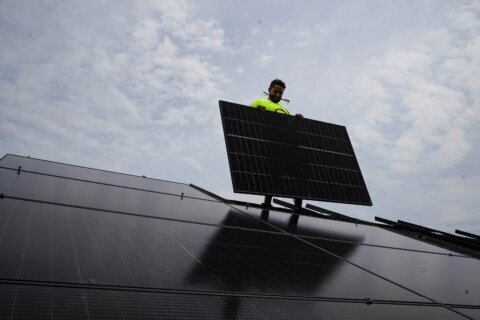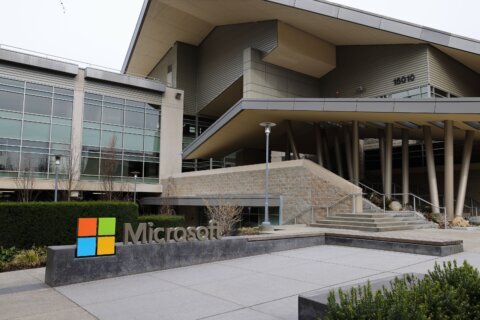The sight of drones delivering packages is a common sight in this Virginia town.
Drones are getting smarter, more closely regulated by the government and becoming a part of everyday life in some communities.
“We’re doing that in Christiansburg, near the Virginia Tech campus, on a daily basis; and I would have thought that was something that would never happen,” said Mark Blanks, director of the Virginia Tech mid-Atlantic Aviation Partnership, a drone test site designated by the Federal Aviation Administration.
“Wing is the name of the company, and they are the sister company of Google. And they’re doing deliveries to the greater Christiansburg area,” Blanks said.
Wing has partnered with FedEx, Walgreens and a local company called Sugar Magnolia. It has been delivering packages weighing 3.5 pounds or less in the greater Christiansburg area since October 2019. Deliveries include things such as chocolate, over-the-counter medicine and sunscreen.
“Stuff like that you might think of from Walgreens and others,” Blanks said.
Wing and UPS now have certification as commercial air carriers, and FAA certification is a big next step.
“It’s everything from how they train the pilots, how they operate the aircraft, how they maintain it. If they approve all those details, and that is the first time ever the FAA has stamped approval for a drone operation,” Blanks said.
Blanks said drones are maturing, growing from innovative prototypes into something normalized, and doing real missions that are useful and beneficial to the public.
Christopher J. Cooper, the director of regulatory affairs for the Frederick, Maryland-based Aircraft Owners & Pilots Association, agrees that drones are becoming useful tools.
“They have been used by public safety departments for search-and-rescue missions and for firefighting efforts, saving countless lives and hours in human resources,” Cooper said in a statement.
But due to the many unknowns and limitations in technology, Cooper said there is still a “ways to go before we see routine, on-demand (Unmanned Aircraft Systems) UAS services to the public.”
According to Blanks, the FAA now is working on regulations for drone operations over people and for being able to identify the equipment.
“There’s a great desire to have law enforcement and others be able to look up in the sky, see a drone and be able to remotely identify whose is it? What’s it doing there? And where’s the pilot located?” Blanks said.
Technological advances needed to allow for more widespread use of drones include detect-and- avoid technology. This is so drones will not bump into things, such as hot-air balloons, gliders or other things in the air do not emit transponder signals.
“And we do that with radar, with optical sensors or with acoustics even to detect sound,” Blanks said.








